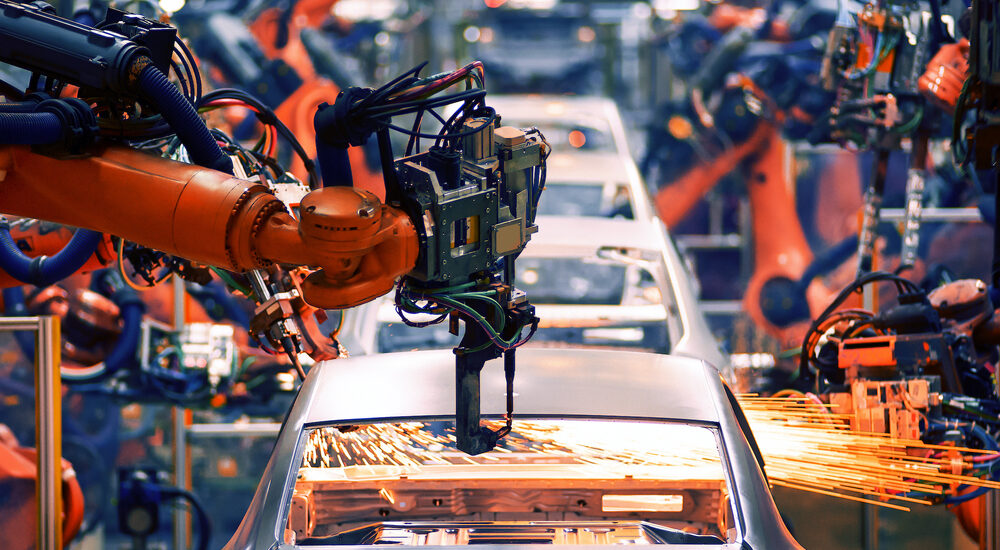The industrial robotic motors Market report, unveiled by Future Market Insights—an ESOMAR Certified Market Research and Consulting Firm—presents invaluable insights and meticulous analysis of the industrial robotic motors market. Encompassing the research’s scope and essence, this report scrupulously examines the driving factors, market size, and predictive data for industrial robotic motors. It furnishes intricate revenue and shipment segmentations, accompanied by a decade-long projection up to 2033. Additionally, the document evaluates key industry players, their market distribution, the competitive scenario, and regional perspectives.
The industrial robotic motors market is on the brink of a remarkable transformation, with projections indicating it will reach a staggering valuation of USD 1.2 billion by the end of 2023. What makes this ascent even more impressive is the expectation of a meteoric Compound Annual Growth Rate (CAGR) of 14% throughout the forecast period from 2023 to 2033, ultimately propelling the market to an unprecedented USD 4.6 billion by 2033.
The surge in the industrial robotic motors market can be attributed to a confluence of compelling driving factors, poised to reshape the global landscape:
- Automation Revolution: The unrelenting march toward automation across various industries is the linchpin of this market’s rapid growth. The relentless pursuit of efficiency and precision in manufacturing processes has been the catalyst for the increasing adoption of industrial robots, consequently driving the demand for cutting-edge robotic motors.
- Technological Advancements: Pioneering technological innovations in robotic motor design, such as the integration of smart sensors, enhanced power density, and superior energy efficiency, have unlocked new realms of possibilities in the world of automation. These breakthroughs have enabled industries to achieve previously unimaginable levels of productivity and precision.
- Economic Viability: The ever-improving cost-effectiveness of industrial robotic motors has tipped the scales in favor of widespread adoption. Businesses are now recognizing the long-term cost-saving potential of automation, further incentivizing investments in robotic motor solutions.
- Global Supply Chain Optimization: The quest for global supply chain optimization has driven the need for nimble and adaptable robotic systems. Industrial robotic motors are at the core of this revolution, providing the agility and scalability required to meet the demands of today’s interconnected world.
However, amidst this exhilarating growth trajectory, there are notable restraints that necessitate consideration:
- High Initial Investment: While the long-term benefits of industrial robotic motors are undeniable, the initial investment required for procurement and integration can be substantial. This cost barrier can be a deterrent for some businesses, particularly smaller enterprises.
- Skilled Workforce: The successful implementation of industrial robotic systems demands a workforce skilled in robotics, automation, and maintenance. The shortage of qualified personnel poses a challenge to businesses looking to harness the full potential of these systems.
- Regulatory Compliance: The evolving landscape of regulations and safety standards in the field of robotics can pose compliance challenges for businesses, adding complexity to the adoption process.
Key Market Trends and Highlights
Surge in Collaborative Robots: The adoption of collaborative robots (cobots) is on the rise, propelling the demand for compact, high-precision motors. These motors play a pivotal role in ensuring the safe operation of cobots alongside human workers, underlining the significance of sensor-integrated motor technology.
Focus on Energy Efficiency: Energy efficiency stands as a paramount concern in the industrial robotics market. Manufacturers are actively developing motors with enhanced efficiency ratings to curtail operational costs and align with global environmental initiatives, emphasizing sustainability as a core value.
IoT Integration and Sensor Technology: Industrial robotic motors are rapidly integrating IoT capabilities, sensors, and predictive maintenance features. These advancements enable real-time monitoring and data collection, ultimately optimizing performance and minimizing downtime. This marks a critical leap towards smarter, more efficient robotic systems.
Customizable and Modular Solutions: Industries are increasingly seeking customizable and modular motor solutions to cater to specific application requirements. Modular motor designs offer unparalleled flexibility, empowering manufacturers to configure robotic systems that adapt seamlessly to evolving production needs. This trend underscores the industry’s commitment to adaptability and efficiency.
The ongoing need for non-delay operations in a number of industries, in the view of rising product demand and shrinking workforce, has led to an incessant rise in the adoption of robotic technology, and the result is likely to lead to an increased demand for industrial robotic motors, according to the FMI analyst.
Competitive Landscape
Leading enterprises in the global industrial robotic motors market are dedicated to the integration of cutting-edge technologies into their automation solutions, aimed at streamlining and enhancing manufacturing processes. Simultaneously, other prominent firms are actively engaging in collaborative efforts, including alliances, mergers, and strategic partnerships, to advance the development of robot arm motors.
Key Players:
- ABB Group
- Nidec Corporation
- FAULHABER Group
- PMDM Group
- HDD
- Aurotek Corporation
- Kollmorgen
- Fanuc Corporation
In February 2022, Comau and IUVO unveiled wearable robotics products with the objective of improving operator efficiency during manual load transfers. This innovative approach seeks to enhance worker health by reducing lower back fatigue.
In January 2022, Yaskawa Electric Corporation further bolstered its presence in the sealing system and robotic painting markets by acquiring additional holdings in Doolim-Yaskawa Co., Ltd. These strategic moves exemplify the industry’s commitment to innovation and expansion.
Industrial Robotic Motors Market by Category
Motor Type:
- Servo Motor
- DC Motor
- Stepper Motor
Robot Type:
- SCARA Robot
- Delta Robot
- Cartesian/Gantry Robot
- Articulated Robot
- Collaborative Robot
- Dual Arm Robot
Fit Type:
- First Fit
- Retro Fit
Region:
- North America
- Latin America
- Western Europe
- Eastern Europe
- South Asia & Pacific
- East Asia
- The Middle East & Africa
About Future Market Insights (FMI)
Future Market Insights, Inc. (ESOMAR certified, recipient of the Stevie Award, and a member of the Greater New York Chamber of Commerce) offers profound insights into the driving factors that are boosting demand in the market. FMI stands as the leading global provider of market intelligence, advisory services, consulting, and events for the Packaging, Food and Beverage, Consumer Technology, Healthcare, Industrial, and Chemicals markets. With a vast team of over 400 analysts worldwide, FMI provides global, regional, and local expertise on diverse domains and industry trends across more than 110 countries.
Join us as we commemorate 10 years of delivering trusted market insights. Reflecting on a decade of achievements, we continue to lead with integrity, innovation, and expertise.
Contact Us:
Future Market Insights Inc.
Christiana Corporate, 200 Continental Drive,
Suite 401, Newark, Delaware – 19713, USA
T: +1-347-918-3531
For Sales Enquiries: sales@futuremarketinsights.com
Website: https://www.futuremarketinsights.com
LinkedIn| Twitter| Blogs | YouTube




